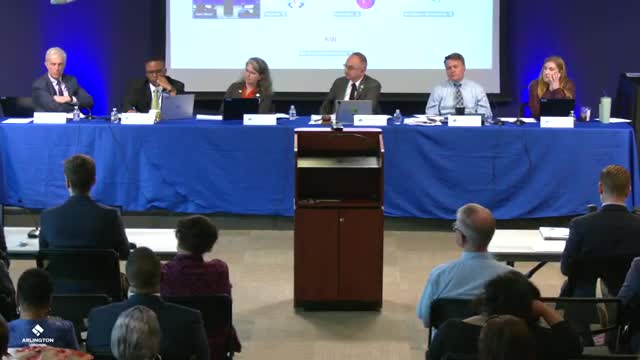County Commission approves GLUP changes and transportation plan amid community concerns
April 05, 2025 | Arlington County, Virginia
Thanks to Scribe from Workplace AI , all articles about Virginia are free for you to enjoy throughout 2025!

This article was created by AI using a video recording of the meeting. It summarizes the key points discussed, but for full details and context, please refer to the video of the full meeting. Link to Full Meeting
Public input played a crucial role in the discussions, with various community groups expressing their concerns. Opposition came from the Lomax AME Zion Church, Arlingtonians for a Sustainable Future, and several community members, who raised issues about the project's impact on the church and the surrounding Green Valley area. In contrast, supporters included the Chamber of Commerce and the Forestry and Natural Resources Commission, highlighting a divide in community sentiment.
A significant portion of the meeting centered on the project's potential effects on traffic, particularly along 20 Fourth Road South. The Commission discussed traffic counts, monitoring strategies, and the placement of bus stops and crosswalks. The Transportation Commission had previously voted unanimously in favor of the project, recommending a crosswalk at the intersection of 20 Fourth Road South and South Garfield Street.
Affordable housing emerged as another critical topic. The applicant increased the number of on-site affordable units from seven to nine, including a three-bedroom unit, alongside a $2 million contribution to the Affordable Housing Investment Fund (AHIF). While some commissioners viewed this increase as insufficient for a project of over 500 units, they acknowledged the limitations imposed by Virginia state law on local affordable housing requirements. Importantly, the project does not displace any current residents, which was a point of consensus among the Commission.
Overall, the discussions reflected a commitment to balancing development with community needs, as the project aligns with the comprehensive plan and various county policies. The meeting underscored ongoing challenges in addressing affordable housing and traffic management while fostering community engagement in the planning process. As the project moves forward, the Commission will continue to monitor its impacts and ensure that community concerns are addressed.
Converted from Arlington County Board Regular Meeting | April 5, 2025 meeting on April 05, 2025
Link to Full Meeting
Comments
View full meeting
This article is based on a recent meeting—watch the full video and explore the complete transcript for deeper insights into the discussion.
View full meeting